Leather is an incredibly versatile material that can be used for a wide range of applications, including clothing, accessories, and furniture. Its unique properties make it desirable for its durability, elegance, and timeless appeal. However, while working with pliable and soft leather is relatively easy, achieving the desired stiffness can be a challenge.
In this comprehensive guide, we will explore various methods and techniques to help you achieve the perfect stiffness for your next leather project. Whether you are a seasoned leatherworker or just starting out, these tips and tricks will provide you with the knowledge and expertise needed to transform your leather creations into works of art. So, let’s delve into the world of leather craftsmanship and unlock the secrets to achieving the ideal stiffness for your leather masterpieces.
What Is Stiffening Leather?
Stiffening leather involves using a variety of processes and techniques to change the texture and strength of the material. This process can be used to create harder, more durable items such as wallets or belts, or it can be used to enhance the appearance of an item by adding texture and shape.
The most common way to stiffen leather is through heat treatment. This process involves using a heat source, such as an electric iron or an industrial steam press, to apply pressure and heat to the leather fibers in order to alter their properties. Heat treatment will cause the leather fibers to shrink and become more rigid, resulting in a stiffer material that can be manipulated into desired shapes and forms.[1]
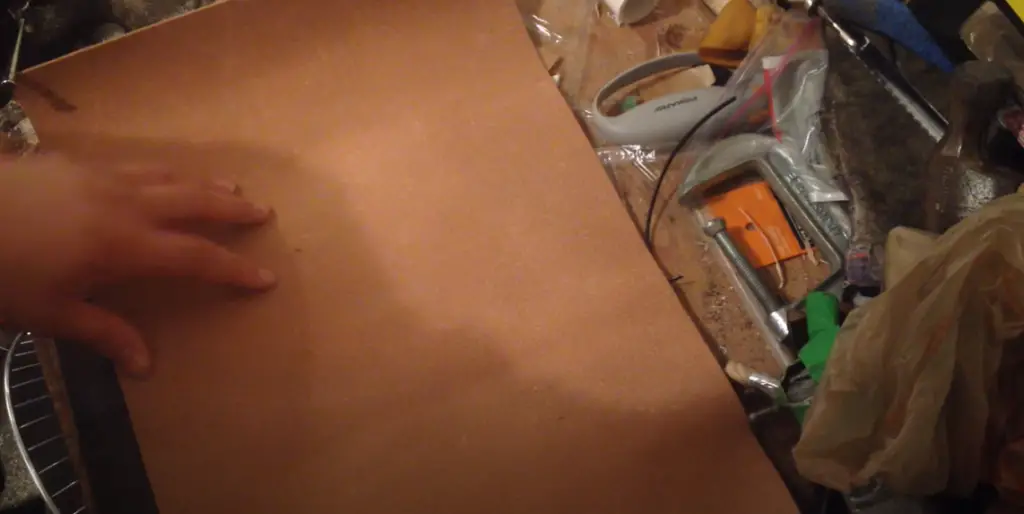
Reasons You Might Choose To Stiffen Leather
There are various reasons why someone might choose to stiffen leather. Stiffened leather is often used for projects that require durability and strength, such as belts and wallets. It can also be used to give leather items a unique shape or texture, or to add an interesting decoration to an item. Additionally, some people prefer the appearance of stiffer leather over soft and pliable leather due to its enhanced structure and ability to maintain its form over time.
No matter what your reason is for wanting to stiffen leather, it can be done with the right knowledge and tools. Let’s take a closer look at some of the different methods used to achieve the desired stiffness, including techniques like wet molding, heat treatment, and the use of stiffening agents. With these methods, you can transform your leather into a material that not only looks great but also provides the durability and rigidity needed for various leathercraft projects.[1]
Method 1: Boiling water
One of the simplest and most effective methods of stiffening leather is to submerge it in boiling water. This method works best on thinner pieces of leather, as thicker pieces might become too brittle when exposed to high temperatures. To use this technique, fill a pot with enough water to cover your leather item completely and place it over medium heat until it begins to boil. Once the water is boiling, carefully add your leather to the pot and let it soak for 30-60 minutes. During this time, the hot water penetrates the fibers of the leather, making it more pliable and easier to shape. After the soaking period, remove the leather from the water and gently pat it dry with a clean towel. Then, lay it flat on a clean surface and allow it to air dry completely. This drying process helps the leather retain its new shape and stiffness. Once the leather is dry, you can proceed with your desired project or use the stiffened leather in any way you like. Remember to handle the leather with care to avoid unnecessary damage.[1]
Method 2: Hammer Time
Another simple and effective way to stiffen leather is by using a hammer. This method works exceptionally well on thicker pieces of leather, thanks to the pounding action that causes the fibers to compress and become more rigid. To begin, carefully place your piece of leather onto a sturdy and flat surface, such as a workbench or an anvil, ensuring it is securely held in place with reliable clamps. Then, armed with a heavy-duty hammer, start striking the leather in a consistent and even pattern, making sure to cover all areas of the material. After several minutes of dedicated pounding, you will begin to notice a remarkable transformation – the leather becomes noticeably more rigid, allowing it to maintain its shape with greater ease and durability. This technique is ideal for various leatherworking projects or when you require a stiffer leather for specific applications.[1]
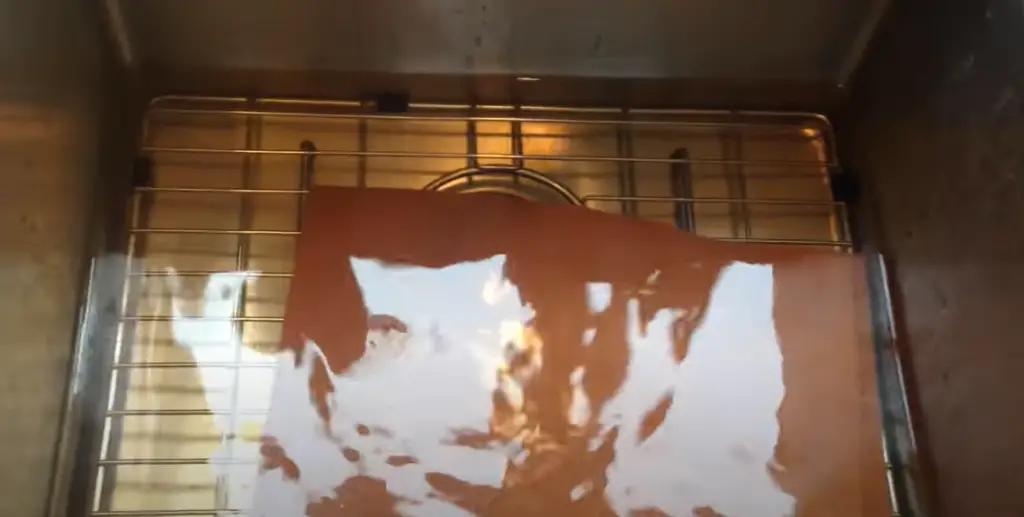
Method 3: Baking Leather
Baking leather is a great way to achieve the desired stiffness, particularly if you are looking for a softer end result. This technique involves placing your piece of leather into an oven set at a low temperature and leaving it there for a few hours. The heat from the oven causes the fibers of the leather to expand, resulting in a more pliable material that can be shaped and molded however you like. This method is ideal for creating softer leather items such as purses, pouches, and gloves.[1]
Method 4: Hot Wax Treatment
Hot wax treatment is another technique commonly used to stiffen leather. This method involves applying heated wax over the surface of the material and then using a brush or an iron to press it into the fibers. The heat helps the wax penetrate deep into the leather, causing it to become more rigid and resistant to stretching. Additionally, this technique can be used to add a beautiful, natural shine to the leather that will make your item look even more stunning.[1]
Regular wet molding
Regular wet molding is a tried and tested method for stiffening leather. This technique involves submerging the material in water and then using clamps to apply pressure, allowing the fibers of the leather to be manipulated into your desired shape. The amount of time you leave your piece of leather submerged depends on how much stiffness you are looking for – the longer it is left, the more rigid it will become. When you’re happy with the results, simply remove the clamps and allow the leather to dry completely before proceeding with your project. This method is great for creating items that require a lot of structural support such as wallets and belts.[3]
Compression Molding
Compression molding is an excellent technique to achieve impeccable shape and stiffness for your leather projects. It involves placing your leather piece into a specialized mold and applying compression using heavy machinery or hydraulic presses. This process enhances the leather fibers’ rigidity, enabling you to create unique wallets and other items that boast exceptional durability and strength. Widely utilized in the production of high-end leather goods, compression molding offers a reliable approach to achieve professional outcomes in your own leather crafting endeavors.[3]
Resin Coating
A resin coating is a great way to increase the stiffness of leather and also add an incredibly sleek, glossy finish. This process involves applying a thin layer of polymer resin over the surface of your leather item and then allowing it to dry completely. The result is a beautiful layer that further reinforces the fibers of the material, resulting in a stiffer product with unique shine and protection. This technique is suitable for items such as bags, wallets, and other leather accessories.[3]
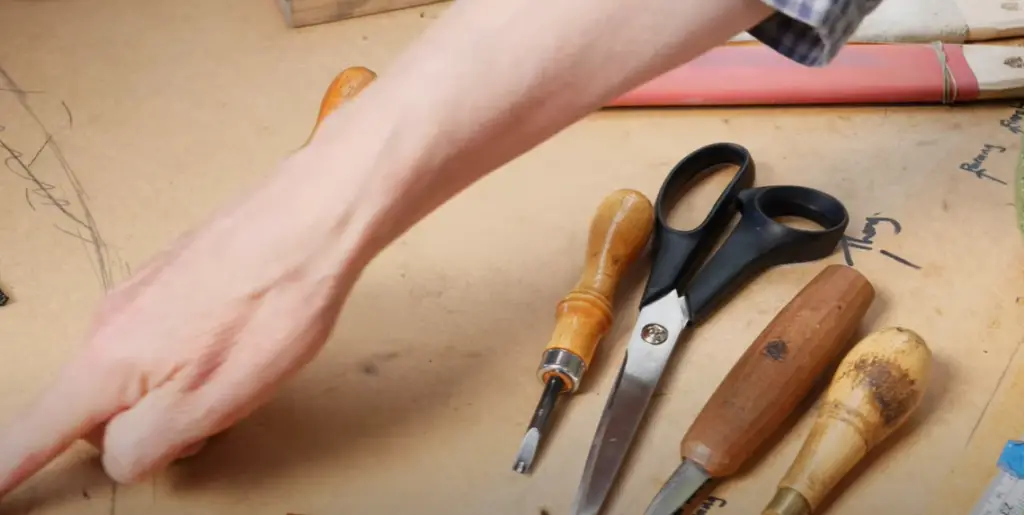
Successful Stiffening Tips
When it comes to stiffening leather, finding the right method requires a bit of trial and error. The thickness of your leather and your desired outcome will determine which techniques work best. To achieve optimal results, consider the following factors:
- The type of leather you’re working with: Different types of leather, such as full-grain or suede, may respond differently to stiffening techniques. Understanding the characteristics of your leather will help you choose the most effective method.
- The desired stiffness: Depending on the project, you may want a slightly stiff or very rigid result. Adjust your approach accordingly to achieve the desired level of stiffness.
- Thoroughly drying your leather: After each treatment, it’s crucial to allow your leather to fully dry. This ensures that the stiffening agents penetrate the fibers, creating a lasting effect.
- Applying the appropriate amount of pressure and heat: When molding or hammering the leather, apply the right amount of pressure and heat. This helps shape the leather and enhances the stiffening process.
- Using high-quality materials and tools: Investing in high-quality stiffening agents, molds, hammers, and other tools will contribute to better results. Cheap materials may not provide the desired stiffness or could even damage the leather.[2]
By considering these factors and experimenting with different techniques, you’ll be able to achieve the perfect level of stiffness for your leather projects.
Select the Correct Type of Leather
Another factor to consider when stiffening leather is the type of material you’re working with. Different leathers have diverse characteristics and respond differently to the various techniques.
Full-grain and top-grain leather are among the common choices for stiffening since they are quite robust and durable, making them ideal for a range of projects. On the other hand, suede leather is softer and more pliable, so it’s a better option for items that require flexibility and shape. Understanding the characteristics of different leathers will help you make the right decision when selecting one for your project.[2]
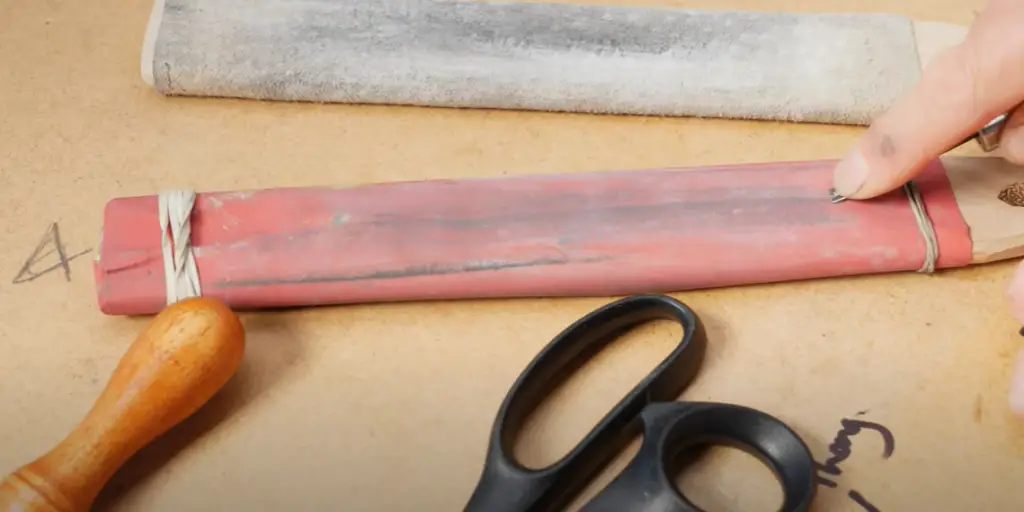
Test on a Small Piece First
Before attempting any of the techniques on your full-size project, it’s highly advisable to conduct a preliminary test on a small piece of leather. By doing so, you can thoroughly evaluate and compare the outcomes of each method, allowing you to fine-tune your approach accordingly. The process of performing several trial runs will not only enable you to identify the method that yields the best results but also assist you in acquiring mastery over the technique before confidently applying it to the main item. This meticulous approach ensures a higher likelihood of achieving optimal results and enhances your overall proficiency in working with leather.[2]
Safety Precautions
Finally, when attempting any of these techniques, it is of utmost importance to prioritize your safety by taking the necessary precautions. Since many of these techniques involve the application of heat and pressure, it is critical to equip yourself with suitable protective gear, such as heat-resistant gloves and impact-resistant goggles, to safeguard against potential hazards. Moreover, ensure that your workspace is well-ventilated to mitigate the risk of exposure to harmful fumes or excessive heat accumulation. Additionally, be vigilant in maintaining a clutter-free environment, free from any flammable liquids or sharp objects that could pose a threat. By adhering to these simple yet crucial measures, you can ensure a smooth and secure experience when working with leather, providing you with the utmost confidence and peace of mind.[4]
When using Hot Water or Wax
When using hot water or wax, it is important to apply the heated material carefully. Always exercise caution and handle heat with care to prevent any potential damage to your project or risk of injury. Take your time to ensure proper application and allow the leather to cool completely before continuing any further manipulation or reshaping. Sudden changes in temperature can have an impact on the properties of the leather, so it’s crucial to let it cool down gradually to maintain its desired qualities. By following these steps, you can ensure the best results and preserve the integrity of your leather work.[4]
When using Chemicals or Resins
When using chemicals or resins to stiffen leather, be sure to take all the necessary precautions and follow safety instructions. Wear protective gear such as gloves and goggles when handling these substances, and make sure to work in a well-ventilated area. Ensure that you adhere strictly to each product’s directions for use. Mixing different substances can result in dangerous reactions, so it is essential to be aware of the potential risks and take note of any warnings. By applying these simple safety measures, you can effectively stiffen your leather with minimal risk.[4]
Aftercare and Maintenance
Once you have completed the stiffening process, it’s important to maintain your leather item properly. A regular cleaning and conditioning regimen is essential for preserving leather’s characteristics and avoiding wear-and-tear. This includes gently removing any surface dirt or dust using a soft brush or cloth, followed by applying a high-quality leather cleaner to remove deeper stains or marks. After cleaning, it is recommended to use a leather conditioner that is specifically formulated for the type of leather you are working with. This will help replenish the natural oils and restore the suppleness of the leather, preventing it from drying out and cracking over time. Additionally, it is advisable to store your leather items in a cool, dry place away from direct sunlight and extreme temperatures. This will help prevent any moisture damage and minimize the risk of color fading or discoloration. By following these simple aftercare steps and giving your leather items the attention they deserve, you can ensure that they maintain their ideal stiffness, luster, and longevity for many years to come.[4]
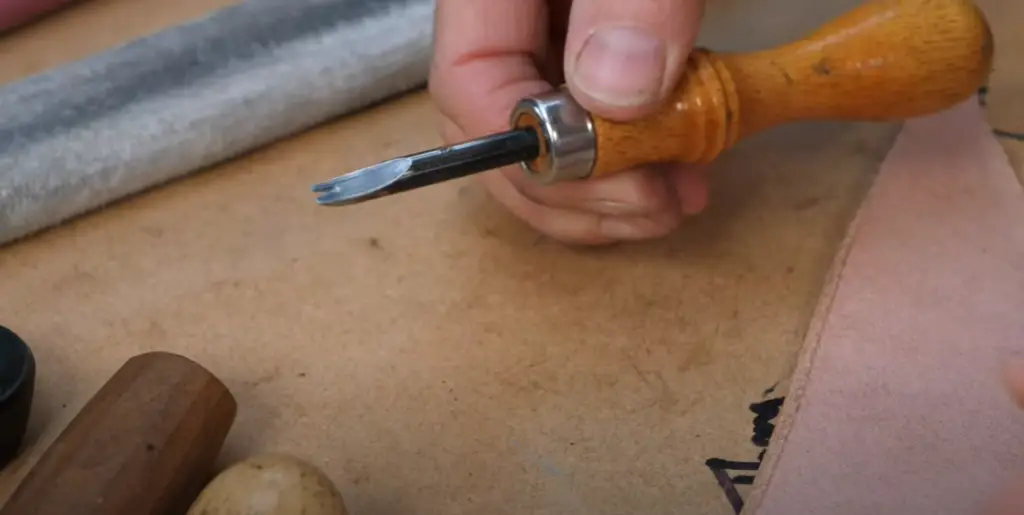
Alternative Uses of Stiffened Leather
Stiffened leather is a remarkably versatile material that can be utilized in an array of projects. Apart from its conventional applications in crafting book covers and wallets, stiffened leather proves to be an excellent choice for creating various decorative pieces such as belts and jewelry. However, the true magic lies in the realm of endless possibilities. With a touch of creativity and ingenuity, you can delve into more unconventional avenues, transforming stiffened leather into awe-inspiring artwork or even bespoke furniture pieces. Imagine the stunning sculptures, intricate carvings, and beautifully handcrafted leather chairs that could grace your living space. With the right techniques and tools at your disposal, there are no limits to what you can create and bring to life with the timeless allure of leather. Let your imagination run wild and embrace the boundless potential of this extraordinary material.[4]
Historical and Cultural Significance
It’s no secret that leather has been a source of fascination, antiquity, and craftsmanship throughout the ages. From its origin in ancient Egypt to its place in modern-day haute couture fashion, leather has captivated the world with its unique qualities and versatility. Today, stiffened leather continues to be appreciated as part of both cultural heritage and contemporary artistry. Whether you are simply looking to stiffen leather for utilitarian purposes or aiming to create a timeless masterpiece, it is essential to appreciate the historical and cultural significance of this craft and honor its legacy in all your endeavors. With an understanding of the past come knowledge and respect for the traditional techniques, allowing us to not only pay homage to our predecessors but also propel forward into uncharted territory. As custodians of the past, let us strive to uphold leather’s timeless beauty and charm in all its forms.[4]
FAQ
How do you reinforce leather?
The most common method of reinforcing leather is by applying a stiffening agent such as wax, resins, and/or chemicals. This can be done either before or after the leather has been cut and sewn. Additionally, hot water can also be used to soften leather fibers and give them more body.
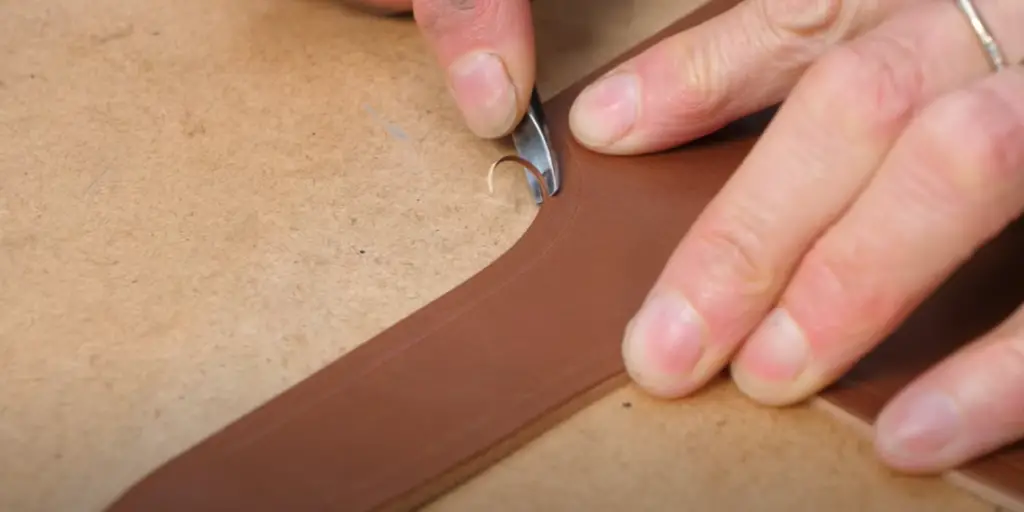
Does beeswax harden leather?
Yes, beeswax is an effective way to stiffen leather. It can be applied by melting the wax and brushing it onto the surface of the leather. Make sure to work in small sections for best results.
How do you harden tanned leather with oil?
Oil-based leather hardeners such as neatsfoot oil and mink oil can be used to stiffen tanned leather. It is important to take into account the type of leather you are working with before applying these substances, as they may darken certain types of leather. To apply, lightly rub a thin layer of the oil onto the surface of the leather with a soft cloth or brush.
What is the best oil for stiff leather?
The best oil for stiff leather is a conditioner specifically designed for the given type of leather. This ensures that the natural oils, fibers, and hide are properly nourished and moisturized while preserving the stiffness of the leather. Additionally, it is also important to use high-quality products as they provide better protection from dirt and damage over time.
Does coconut oil permanently darken leather?
Yes, coconut oil can darken leather depending on the tanning process used to create it. If you are looking to stiffen your leather with a natural product, then beeswax may be a better alternative as it does not affect the color of the leather. However, if you do choose to use coconut oil, make sure to test it on an inconspicuous area of the leather first to check for any discoloration.
What oil darkens leather the most?
Neatsfoot oil is one of the most common oils used to darken leather as it penetrates deep into the hide, restoring its natural oils and color. However, before using this product, it is important to take into account the type of leather you are working with and whether or not neatsfoot oil will react with it. Additionally, many people opt for oil-based leather dyes as they provide more control over the color and can be used to create various shades.
Do oils damage leather?
Yes, certain oils can damage leather if not used correctly. It is important to always test the product on an inconspicuous area of the leather beforehand and follow the instructions for proper application. Additionally, it is also a good idea to check online forums or consult with professionals before attempting to use any oil-based product as they can be quite powerful and cause irreversible damage if not used correctly.
Does olive oil make leather darker?
Yes, olive oil can darken leather if applied incorrectly. However, this is not recommended as it tends to be quite sticky and may damage the leather over time. If you are looking for a natural product to stiffen your leather, then beeswax or coconut oil is likely a better choice.
Useful Video: The Leather Element: Hardening Leather
Conclusion
The art of stiffening leather is a fascinating endeavor that can take on many forms, from utilitarian to artistic. No matter what your goal may be, it is important to have the right tools and techniques at your disposal so that you can confidently bring your vision to life. With an appreciation for its cultural significance and a mindful understanding of its properties, you can create something truly remarkable with leather. So embrace the possibilities of this timeless material and unlock its boundless potential.
References:
- https://www.libertyleathergoods.com/how-to-stiffen-leather/
- https://vonbaer.com/blogs/blog/how-to-stiffen-leather
- https://leatheradvice.com/how-to-harden-leather/
- https://mazeleather.com/4-ways-to-harden-leather/

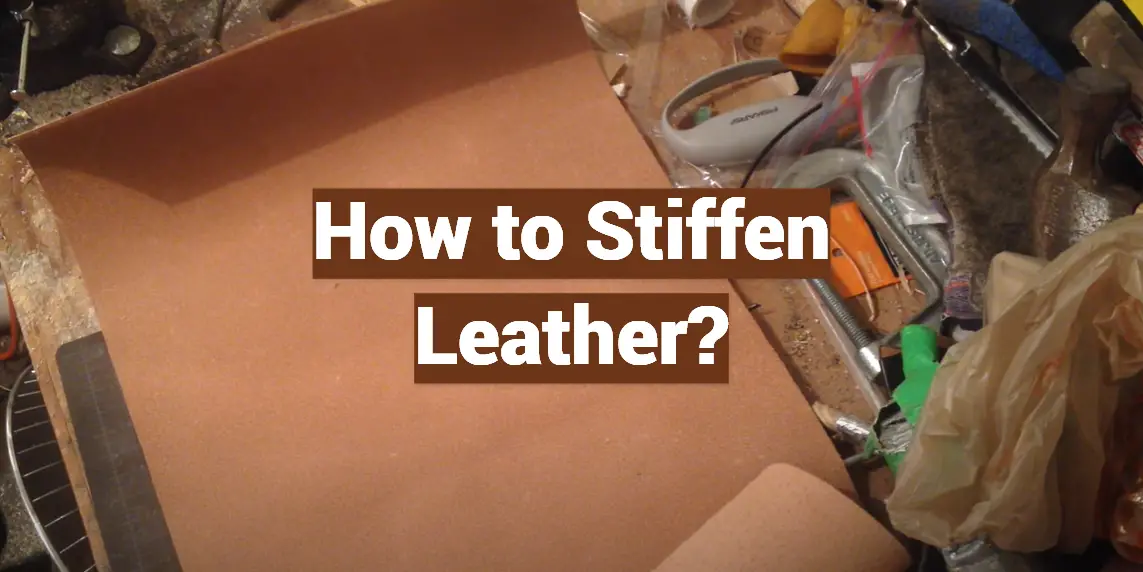

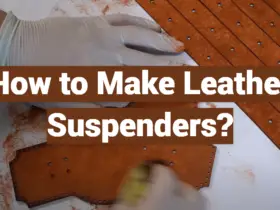

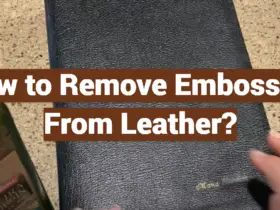

Leave a Reply